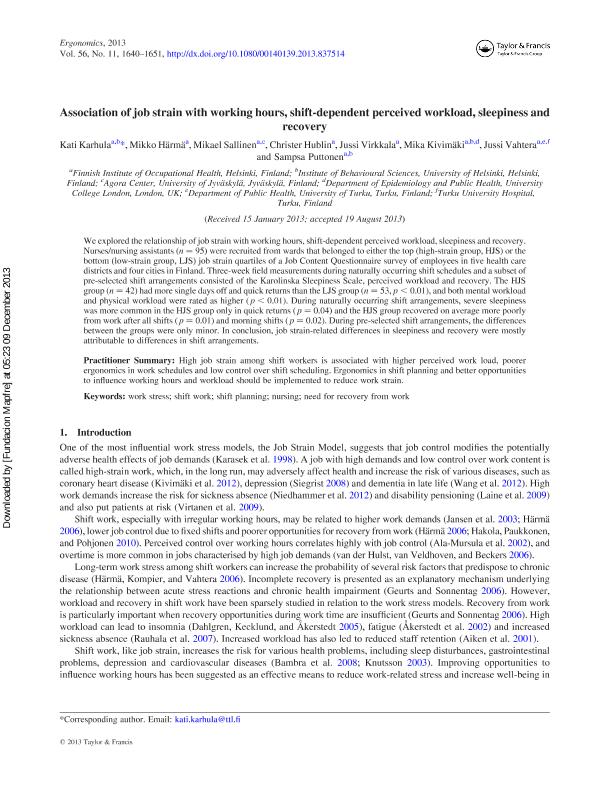Association of job strain with working hours, shift-dependent perceived workload, sleepiness and recovery

Contenido multimedia no disponible por derechos de autor o por acceso restringido. Contacte con la institución para más información.
| Tag | 1 | 2 | Value |
|---|---|---|---|
| LDR | 00000cab a2200000 4500 | ||
| 001 | MAP20130041223 | ||
| 003 | MAP | ||
| 005 | 20131210102157.0 | ||
| 008 | 131209e20131104esp|||p |0|||b|spa d | ||
| 040 | $aMAP$bspa$dMAP | ||
| 084 | $a875 | ||
| 245 | 0 | 0 | $aAssociation of job strain with working hours, shift-dependent perceived workload, sleepiness and recovery$cKati Karhula...[et.al] |
| 520 | $aWe explored the relationship of job strain with working hours, shift-dependent perceived workload, sleepiness and recovery. Nurses/nursing assistants (n = 95) were recruited from wards that belonged to either the top (high-strain group, HJS) or the bottom (low-strain group, LJS) job strain quartiles of a Job Content Questionnaire survey of employees in five health care districts and four cities in Finland. Three-week field measurements during naturally occurring shift schedules and a subset of pre-selected shift arrangements consisted of the Karolinska Sleepiness Scale, perceived workload and recovery. The HJS group (n = 42) had more single days off and quick returns than the LJS group (n = 53, p < 0.01), and both mental workload and physical workload were rated as higher (p < 0.01). During naturally occurring shift arrangements, severe sleepiness was more common in the HJS group only in quick returns (p = 0.04) and the HJS group recovered on average more poorly from work after all shifts (p = 0.01) and morning shifts (p = 0.02). During pre-selected shift arrangements, the differences between the groups were only minor. In conclusion, job strain-related differences in sleepiness and recovery were mostly attributable to differences in shift arrangements. | ||
| 773 | 0 | $wMAP20100019818$tErgonomics : the international journal of research and practice in human factors and ergonomics$dOxon [United Kingdom] : Taylor & Francis, 2010-$x0014-0139$g04/11/2013 Volumen 56 Número 11 - noviembre 2013 |

